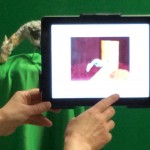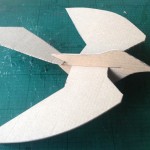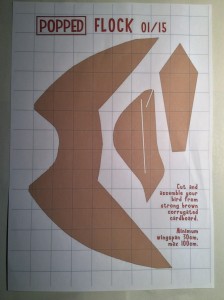Jennifer Hogan – Microscopic images
– Dirty Stinky Children
Jennifer Hogan – Microscopic images
– Dirty Stinky Children
Nichola Cook – Boughton Primary School
– Superheros Film Project
Amanda Dickens and Joanne Marlow, Vernon Terrace School
– Using digital media and animation to get boys into creative writing
Ash Williams – Filming with greenscreens and animation
Ben Halford – Greenfields School – Greenscreening a weekly news report
Sheils Swift – Raunds Park Infant School – iPads
Alison Witts – Caroline Chisholm Primary – Media for History
In our January meeting Helen Scott introduced us to the technique for making three dimensional forms – we explored animals. Helen showed us how to manipulate aluminium wire to make an armature, then cover this with thin strips of newspaper and copydex, followed by adding for scrunched up paper to add form. We worked from photos Helen had brought along and she encouraged us to look for the features of the animals’ bodies that made them seem ‘in movement’ so that the sculptures were more than just static ornaments. It was both challenging and absorbing – and quite amazing how much we got done in a short time. There is so much potential for using this technique with students and children – suggestions about using photos of children in motion could also be a good starting point, as would insects.
 Dave Barrow came along and showed us some of his work towards his next children’s book – soon to be published. He explained how he uses pencils, paint and other art materials and then scans and manipulates the images to create multi layered images for each of the pages in his picture books using low cost or free software such as Gimp, PaintShop Pro or Photoshop Elements. We can’t reveal his finished images until his work is published!
Dave Barrow came along and showed us some of his work towards his next children’s book – soon to be published. He explained how he uses pencils, paint and other art materials and then scans and manipulates the images to create multi layered images for each of the pages in his picture books using low cost or free software such as Gimp, PaintShop Pro or Photoshop Elements. We can’t reveal his finished images until his work is published!
Helen Caldwell showed us how to use a green screen and the app Greenscreen by Do Ink to place the animal forms that we had made into other environments, such as a a habitat or story scene and choose from a still or a moving image. The green background can be as simple as a strip of backing paper or a green PowerPoint slide on an interactive whiteboard, or you can buy a portable green screen for under £100. Narration or sound effects could be added within the app or by editing in iMovie. Interesting effects can be achieved by working with green gloves or a piece of material to make a moving image.
 Jean Edwards shared the NN Cafe project where the arts group ‘Popped’ are asking people to make birds from corrugated card and take them in to be part of art installation called ‘Flock’. Jennifer Hogan is working on this with the children at Lab 13 – it will
Jean Edwards shared the NN Cafe project where the arts group ‘Popped’ are asking people to make birds from corrugated card and take them in to be part of art installation called ‘Flock’. Jennifer Hogan is working on this with the children at Lab 13 – it will  be interested to see what happens…
be interested to see what happens…
In our November meeting we explored at how we could use the visual programming language Scratch to create interactive art. One of the key approaches to computing is to remix and reuse, rather than always start from scratch, so to speak, and so there is much to be gained from modifying existing computing projects.
Helen shared this collection of coding and art Scratch projects that we explored in the session.
 We also looked at resources from Barefoot Computing on drawing crystal flowers and thought about how these might link with analysing Rangoli, Islamic or Celtic patterns, as well as with aspects of the maths curriculum.
We also looked at resources from Barefoot Computing on drawing crystal flowers and thought about how these might link with analysing Rangoli, Islamic or Celtic patterns, as well as with aspects of the maths curriculum.
 Other webtools that can be used alongside this theme include the online image generator Mutapic and the interactive art tools Weavesilk and Beautiful Curves.
Other webtools that can be used alongside this theme include the online image generator Mutapic and the interactive art tools Weavesilk and Beautiful Curves.
 Alongside these we looked at some of the amazing projects created using digital technology by artists that were featured in recent exhibition at The Barbican, Digital Revolutions.
Alongside these we looked at some of the amazing projects created using digital technology by artists that were featured in recent exhibition at The Barbican, Digital Revolutions.